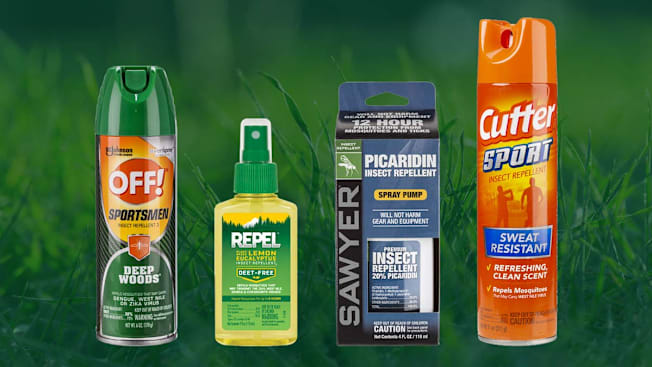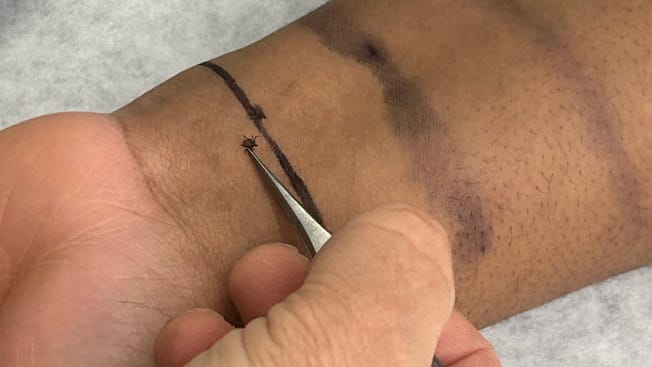How Some of CR's Top Insect Repellents Fare Against Ticks
Repellents containing deet, oil of lemon eucalyptus, and picaridin can help protect you, but they should still be just one part of your tick-avoidance strategy
When you shop through retailer links on our site, we may earn affiliate commissions. 100% of the fees we collect are used to support our nonprofit mission. Learn more.

To protect yourself against ticks, which can spread Lyme disease and other nasty illnesses, experts recommend that you take some basic precautions while tromping through the woods or playing in your backyard. They include tucking long pants into your socks, doing a tick check at the end of the day, and using an effective insect repellent.
But what is an effective tick repellent? Is it the same as one that works against mosquitoes?
According to the Environmental Protection Agency, the same ingredients—including deet, picaridin, and oil of lemon eucalyptus—can work against both pests. If a company claims that its repellent works against insects and ticks, it must provide the EPA with proof. Consumer Reports tests over the years have confirmed that repellents that excel in keeping mosquitoes away typically also do a good job repelling ticks, says Chris Regan, who leads CR’s insect repellent testing program. That’s one reason CR’s testing of insect repellents, like the testing conducted by most independent groups, has focused on mosquitoes and not ticks, he says.
All four repellents generally offered at least several hours of protection against ticks in our tests, with the deet-based products performing best. Still, this was just a small test of a few repellents, and it doesn’t mean that all deet repellents will work as well or better than those with other ingredients, Regan says. In general, consumers should select a repellent that uses one of these ingredients and follow the application instructions on the label.

Photo: Consumer Reports Photo: Consumer Reports
What Our Tick Tests Found
In our tests against ticks, we used Cutter Sport Insect Repellent Spray, a product with 15 percent deet; Off Sportsmen Deep Woods Insect Repellent 3, an aerosol spray that has 30 percent deet; Repel Lemon Eucalyptus Insect Repellent2 Pump, a pump spray containing 30 percent oil of lemon eucalyptus (OLE); and Sawyer Picaridin Insect Repellent, a pump spray with 20 percent picaridin.
Blacklegged ticks, sometimes called deer ticks, were placed on the hand or wrist of four test subjects and then observed as they climbed up toward the elbow, which would require them to cross an area treated with repellent. Tests were repeated once an hour for up to 5 hours unless a tick crossed the boundary area twice in successive tests, which indicated that a repellent no longer offered protection.
On average, the two deet products—the Cutter (15 percent deet) and the Off product (30 percent deet)—offered the longest-lasting protection, followed by the Repel product (30 percent OLE), which was followed by the Sawyer product (20 percent picaridin). While this is just a snapshot with limited data, Regan says this is enough information to continue recommending repellents with EPA-registered ingredients, especially those containing 15 to 30 percent deet. But this is not enough data to say that every deet product will beat every OLE or picaridin product every time. In fact, in some of CR’s previous tests, a few products with OLE or picaridin worked at least as well as some of those with deet.
Regan also notes that ticks didn’t always react to repellents in a consistent manner. They would sometimes pass a barrier during one hour and appear to be repelled by it in the next. And that performance can vary depending on whether it’s properly applied.
It’s reasonable to be somewhat wary of claims about the number of hours of protection a repellent will offer against ticks, Mather says, because in tests “ticks very rarely do what you want them to do.” Mather’s lab is trying to develop new ways to test repellents for tick protection to get around some of the inconsistent data that many lab tests find.
In the meantime, most experts agree that repellents can help protect consumers against ticks. People just need to be sure to read the labels to ensure they’re using them correctly, and reapply as frequently as the label says, Mather says.
You should also pair repellents with other strategies to ward off tick bites, such as tucking long pants into socks while gardening or hiking, and possibly wearing clothing treated with the insecticide permethrin. Another key step is to do a thorough tick check at the end of the day. Don’t just glance at your arms and legs; take a close look at your body, carefully examining warm spots like between your legs, in your armpits, and behind your knees.
































